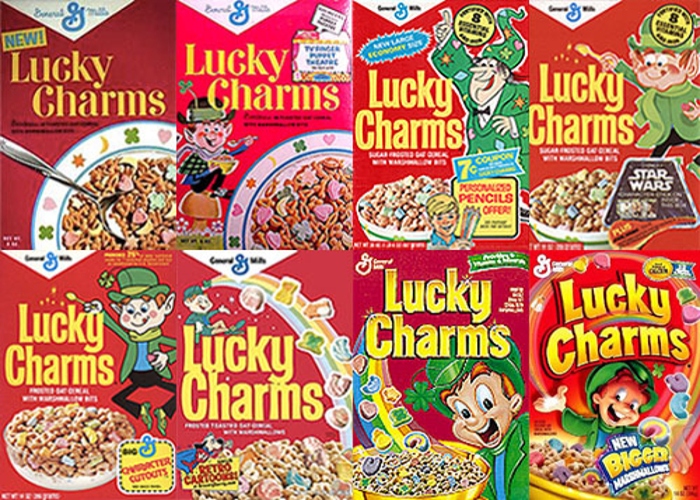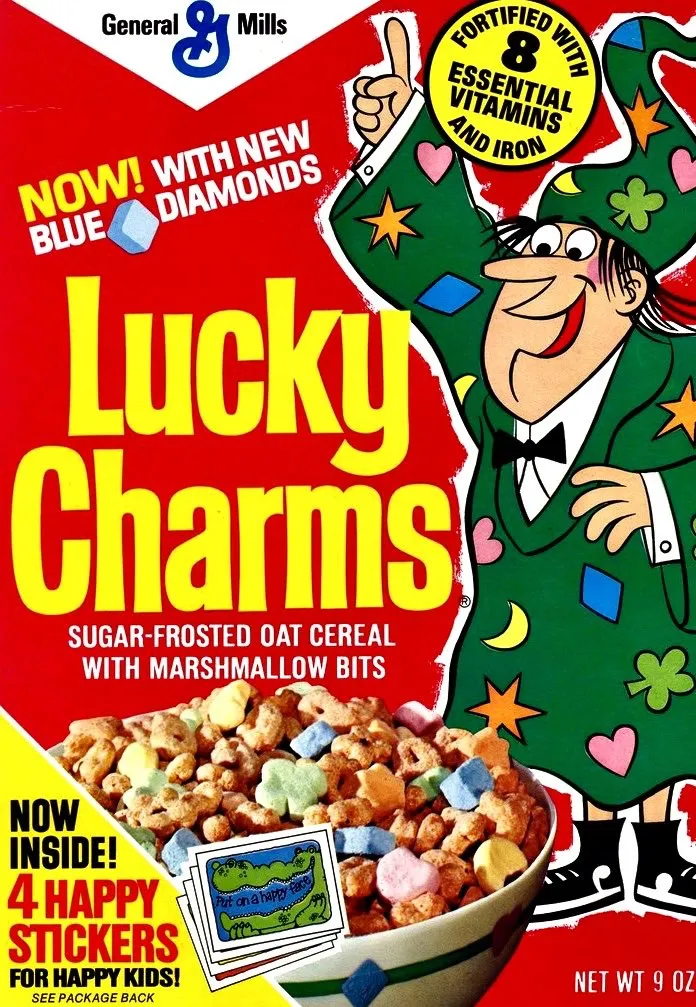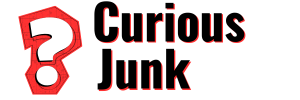
Lucky Charms cereal has been a favorite of kids everywhere since it first hit store shelves in 1964. But even though the brand is almost sixty years old, most people don’t know much about it other than it tastes great. Let’s change that.
Lucky Charms, for as good as it is, has its history tied to a far less-liked treat…circus peanuts. According to legend, Lucky Charms came about when General Mills executive John Holahan was working on developing a new cereal that children would go crazy over, and thus drive their parents crazy to buy it for them. He came up with a weird, but brilliant idea, to add cut-up circus peanut marshmallows to a bowl of Cheerios. He loved what he was tasting and came to the conclusion that if he enjoyed the combination of crunchy cereal and soft marshmallows, then most likely, so would kids.
The new cereal sold fairly well in its first few years, but didn’t set the world on fire. And if a cereal that features marshmallows wasn’t enough to hit the top of the charts, what could get it there? The answer to this dilemma was the same as it’s been for countless other foods designed to appeal to kids through the years. More sugar. In 1967, the cereal pieces received an upgrade with a whisper coating of sugar, and from that point on, Lucky Charms was considered a favorite of kids everywhere.
Kids did indeed love the cereal, but it turned out they really liked the Lucky Charms cartoon mascot as well, and Lucky the Leprechaun was appearing in television commercials all over the country promoting the cereal. The plotline of the commercials through the years has stayed pretty much the same, as Lucky is always having to use his magical powers to try to keep hungry kids who are always “after me Lucky Charms” away from his cereal.
Lucky has survived as the Lucky Charms mascot since the beginning, but he almost lost his gig back in the mid-1970s. The same advertising agency that brought Lucky to life was tasked with creating a replacement because the leprechaun came across as “not very friendly for the kids”. The replacement they came up with was Waldo the Wizard.

Waldo was a scatterbrained sorcerer, and when he was test-marketed in the New England area, he turned out to be more popular than Lucky. During the same test period, Lucky was still used as the mascot in all other areas of the country. In addition, the commercials that Lucky was featured in were re-tooled to be more kid-friendly. By the end of the test, the re-tooled commercials had done the trick and Lucky was more popular than ever. The decision was made to keep Lucky in the gig, and put Waldo the Wizard in mothballs.
Fun Fact: Most modern generic, knockoff, and store-brand versions of Lucky Charms feature some kind of wizard as the mascot.
The wizard theme made sense as a replacement since a wizard is magical in nature, just like Lucky the Leprechaun has been portrayed through the years. And what gives Lucky his magical powers you ask? Why the marshmallows of course!

Marbits is the correct term for the marshmallows found in Lucky Charms cereal, and the magically delicious little sugar pellets have undergone numerous changes through the years. When the cereal was first released, the marbits consisted of a lineup of just four shapes: pink hearts, orange stars, yellow moons, and green clovers. That lineup would last for the first eleven years of the cereal, but in 1975, blue diamonds were added to the mix. And adding a fifth marbit design proved to be quite the successful ploy, as sales of Lucky Charms rose 30% with the addition.
Just a short eight years went by before a sixth marshmallow was added to the mix with the introduction of purple horseshoes. This lineup of six colored shapes lasted just two years before the blue diamonds were pulled from the roster, reducing the count back to five.
The next major change to the marbits came in 1989 for the 25th anniversary of Lucky Charms, and red balloons were added to the mix and have remained part of the lineup since. Three years later, the multi-colored rainbows were added as well, and in 1995 the yellow moons were replaced with blue moons.
After 30 years in the lineup, the orange stars were replaced with orange and yellow shooting stars in 1998. And just last year in 2020, a blue and white unicorn was added to the mix. While various other marshmallow shapes have come and gone through the years as special promotions, the current lineup stands at nine shapes: pink hearts, green clovers, purple horseshoes, red balloons, blue moons, tri-color rainbows, orange and yellow shooting stars, and blue and white unicorns.
I mentioned earlier that Lucky gets his magical powers from his magically delicious marshmallows. Those powers are as follows:
- Pink Hearts – gives life to objects
- Green Clovers – the power of luck
- Purple Horseshoes – the power of speed
- Red Balloons – the power to float
- Blue Moons – the power of invisibility
- Rainbows – the power to teleport
- Shooting Stars – the power of flight
- Unicorns – brings color to the world
In just two short years from now in 2024, Lucky Charms will be celebrating 60 years of being a part of a complete breakfast the world over. I know I’ve had my fair share of them through the years, and I’m sure you have as well. And as the late Paul Harvey would say, “and now you know the rest of the story”.

Be the first to comment